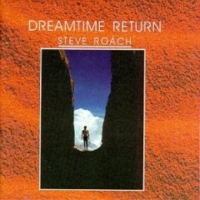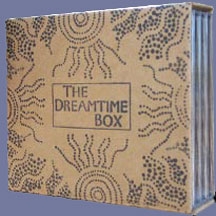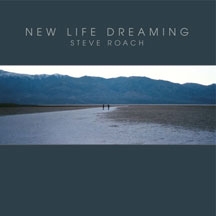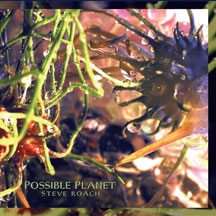Steve Roach: Dreamtime “Revisited”Date: 2005 |
||
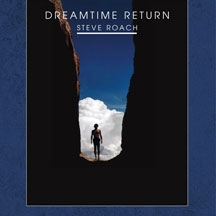
The 1988 album “Dreamtime Return” is a state-of-the-art sound document which in its own way pays tribute to the timeless landscapes, art and the mythic dreamtime of the Australian Aboriginals. For this purpose, Steve Roach spent a lot of time deep in Australia’s outback to explore and absorb the beauty of numerous sacred sites where Aborigines had painted their stories of The Dreamtime (their story of creation) for thousands of years. It was in fact these explorations through the Aborigine myth of The Dreamtime and their highly complex story of creation that inspired and led to his remarkable recording. Before he had even taught of ever travelling to Australia, Steve went through a time of intensive personal growth and understanding, leaving behind a lot of European influences. In addition, the feeling of a sonic and spiritual bridge between the American Southwest and the Australian outback was awakening as Steve saw the film “The Last Wave” by the Australian director Peter Weir, on which he heard the fascinating sound of the didgeridoo for the first time. As Roach recalls, the “Dreamtime Return” is a sound documentation of his own Dreamtime travels which took about three years: they already started around 1985-1986 in Southern California and later on continued to Northern Australia. About a month later Steve also met Florida-based writer/photographer David Stahl, who had heard his third album “Structures from Silence” on the radio while driving through the desert to Mexico. Stahl was so intrigued by the music he invited Steve to collaborate on a film project about the Aboriginal art of The Dreamtime. Steve became part of the crew and took some music with him, which was created long before, in his own Time Room studio. During his journey Down Under Steve also met the Aboriginal didgeridoo player David Hudson, who taught him to play the didgeridoo. Later on Steve would produce three of David’s didgeridoo records. In contrast with the ’88 album on lp and mc, the original cd contains 38 minutes of additional music. Two tracks were only found on the cd, and the track “Looking for Safety” is featured in a special extended version of 31 minutes.
In 1998 Celestial Harmonies reissued “Dreamtime Return” as a duo box 2-cd with redesigned cover. However, the new release on Projekt was totally remastered by Steve and the artwork returned to its original look along with new photos in the booklet.
Next to the 24-bit remastered 2-cd album, two additional cds with 140 minutes of all-new music were added, titled “New Life Dreaming” and “Possible Planet”, thereby completing “The Dreamtime Box”. All cds can be ordered individually, but the each uniquely hand-printed box earth coloured box will only be available straight from Steve’s own site and the Projekt site. Steve Roach talks about the new reissue of “Dreamtime Return”So, what made Roach turn back to “Dreamtime Return”(DTR)? Over time I felt I could bring the things I have learned about mastering to this release. In addition, it draws on its personal significance for me along with how it still seems to hit a collective nerve out in the world since its original release. Do tell us of the two new cds of music you added to the original album. Were they hard to compose?
It’s a living, breathing, space for me which has continued to flow down deep over the years. As I re-opened the door to this dreamtime space, the creative urges and subtle cues to follow the trail deeper was immediately reinforced by several new pieces, which feel directly, connected to this indescribable quality. These new pieces just flowed out. “Possible Planet” is a three-movement long form analogue zone world of pure textural bliss created between December 2004 and May 2005, which developed into a pivotal new release for me. It’s also included in the DTR-box because it represents a parallel in some ways to the track “Looking For Safety”.
“Possible Planet” and “Looking For Safety” (recorded in 1986) are at similar points on that graph, with many years in-between them and created in very different circumstances, but still sharing the same air. In order to remove the reliable and familiar modes of working, I eliminated a few basics: no MIDI, keyboards of any kind, or computers for composition and editing. It was all about twisting knobs, feeling it in my fingertips and coaxing the current into the desired direction. In March 2018, Projekt Records released the 30th Anniversary High Definition Remastered Edition of “Dreamtime Return”. Spotted Peccary’s Howard Givens utilized his years of technical knowledge with electronic music, an extensive array of analog and digital tools, and his passion for this seminal work, to restore the original sonic nature and visionary intention, taking the listener deeper into the dreamtime. Website: www.steveroach.com |
||

